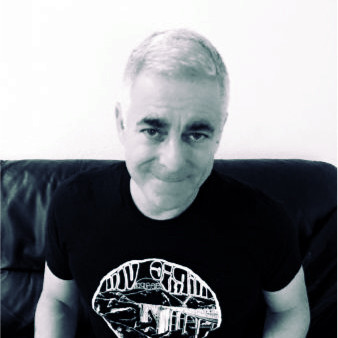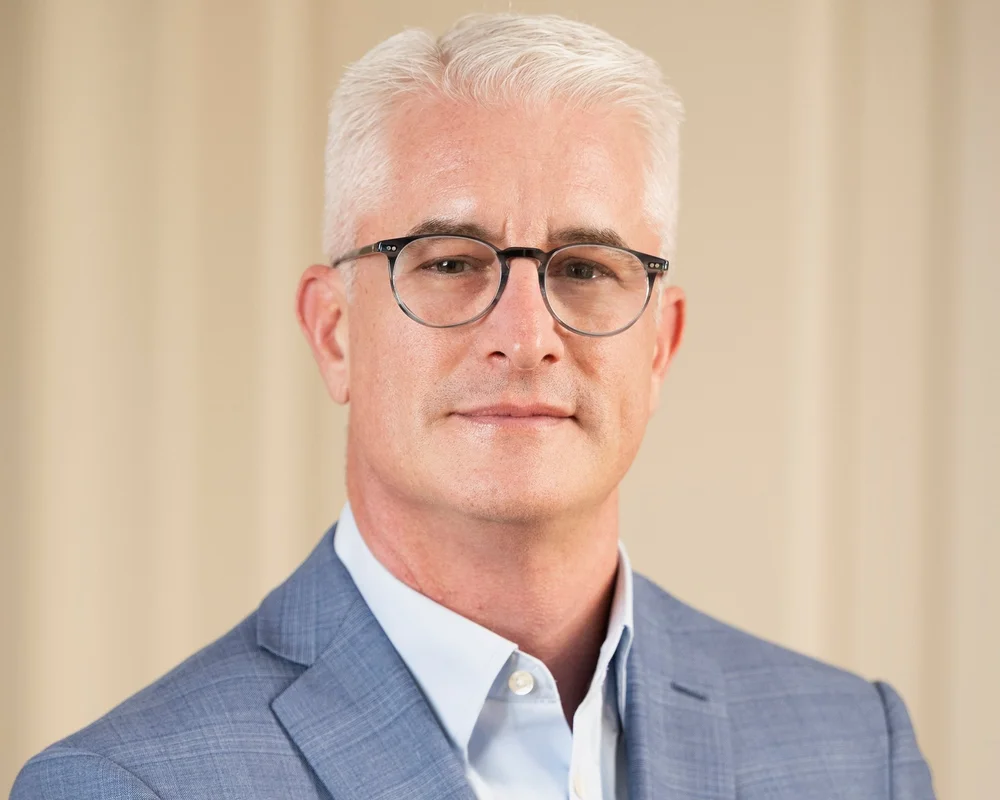 The New York City telecom market has always been a dynamic one, with the nation’s densest population, a demanding financial vertical, and plenty of legacy physical infrastructure underground to navigate. Ray La Chance and his team have returned to this market with the new operator ZenFi, having built and run Lexent Metro Connect before its sale to Lightower several years ago. Ray joins us today to talk about dark fiber, the challenge of mobile data, and how ZenFi is hoping to make its mark on New York City’s next generation of infrastructure.
The New York City telecom market has always been a dynamic one, with the nation’s densest population, a demanding financial vertical, and plenty of legacy physical infrastructure underground to navigate. Ray La Chance and his team have returned to this market with the new operator ZenFi, having built and run Lexent Metro Connect before its sale to Lightower several years ago. Ray joins us today to talk about dark fiber, the challenge of mobile data, and how ZenFi is hoping to make its mark on New York City’s next generation of infrastructure.
TR: At Lexent, you built fiber all over New York. What drew you back in?
RLC: We decided to jump back into the fiber business and focus on a different type of network for a different application. Our objective in the Lexent days was to build enterprise dark fiber infrastructure and carrier wholesale dark fiber infrastructure, where we were an underlying provider of neutral, open to everyone, fiber assets that could be used for any application including resale. We were an enabler. We still see ourselves in that neutral role, but we’ve decided to focus our efforts on the fiber-to-the-antenna space and enable mobile network operators to densify their networks. That’s the real goal here with our network architecture, to support the mobile network operator ecosystem by providing underlying fiberoptic capacity anywhere and everywhere. We see the opportunity here to build the networks to building rooftops, building facades, light poles, anyplace you need fiber for a mobile wireless application. That’s the mission today.
TR: What type network infrastructure is ZenFi building?
RLC: To support densification for mobile, we think a new architecture has to be deployed. We see a model that has both fronthaul fiber and backhaul fiber. By fronthaul fiber we mean a dense network that reaches out from an aggregation PoP, many of which are located in neighborhoods throughout the city. We envision these aggregation PoPs or base station hotels, or mini-data centers as being located in neighborhoods throughout New York City that reach out to antenna locations, aggregate them, then backhaul on a dense mesh to the usual suspect carrier hotels — 60 Hudson, 111 8th, 325 Hudson, 32 Avenue of the Americas.
TR: What have you built so far?
RLC: We have nearly 100,000 feet of cable in the ground today, which is the core infrastructure that you would expect and that has to be in place, the backbone that connects those carrier hotels together. We will have established PoPs in all the carrier hotels by no later than June this year. We’re building downtown now to pick up 75 Broad, 375 Pearl as well as a cable across the Hudson River over to Secaucus. That cable is going in next week and ends in Weehawken, where we will pick up Equinix and look towards Newark. But there’s nothing really special about those parts. We decided that this time the real special stuff is figuring out the new architectures to support mobile wireless densification.
TR: What makes the networks needed for mobile wireless densification so different?
RLC: There are only a couple thousand cell sites in Manhattan right now, but there is the potential for 100,000 and every one of those requires high bandwidth, low latency, low jitter connectivity. And so we need a fiber infrastructure to support that. The enterprise networks that have been built in the past weren’t set up for the kind of fragmentation that mobile networks drive. We have an environment that potentially you’ll be breaking out on every single block of 5th avenue and every block of Broadway. The traditional networks are set up with splice locations every 2,000-3000 feet. To get off the highway you need an on-ramp, but we don’t have them every block. You have to go to a splice location and build back to wherever you really want to get to. We envision a network that is built for both express and local traffic, built to support this fragmentation.
The critical component is the access to the network, very similar to what Verizon has for its FIOS network and what TW Cable does for its cable network, where there is access at every building along the route. For wireless we need something that is similarly accessible, but supports much higher bandwidth than those providers can do. The first step is access, but access to entire strands of unshared fiber for up to 10Gbps to each node in thefronthaul.
TR: What parts of the New York metro area do you plan to serve with this new infrastructure?
RLC: We anticipate building neighborhood colos in all the boroughs, and we expect to build this network throughout the city. We may move beyond the city at some point.
TR: When will you start work on the fronthaul piece?
RLC: We are working on a prototype for the fronthaul concept now. It has been done before in dense asian cities by companies like China Mobile and Korea Telecom. We are working closely with our vendor to prove the case here in New York City, to show that a bifurcated macro-site model for fronthaul with aggregated base stations, remote RF processing is the way of the future. It leads to consolidated RAN and on to cloud RAN. Hopefully we’ll be publishing case studies on this by the end of the year.
TR: Will you be focusing on dark, lit, or dim fiber?
RLC: Clearly dark fiber works, and we expect that many of the nodes will be supported with full dark. But we’ll always have the option to provision wavelengths via CWDM or DWDM using passive filters supporting any application that the wireless provider requires. But we’ll also add metro Ethernet to the mix for small cell and backhaul applications where carriers are looking for latency- and jitter-sensitive, high bandwidth connections where they don’t want to run it themselves.
TR: Will you be using fixed wireless to supplement the network?
RLC: We see ourselves as providing underlying connectivity. That is predominantly fiber, but within our skill set we will deliver certain high bandwidth services via fixed wireless. We have spent a lot of time looking at different technologies, and we’ve been following vendors in the non-line-of-sight space as well as multipoint wireless technologies. We envision supporting backhaul applications and possibly fronthaul applications with those technologies, everything from microwave up to millimeter wave.
TR: Will you be raising additional money to help with the buildout?
RLC: We’re well enough funded today to make the case and prove the concept. We’ve been self-funded and our goal is to take our time and do it the right way. We’ll certainly entertain opportunities to raise capital down the road if the business requires it. But right now our objective is to stay focused and build something differently. Capital won’t be difficult for us to raise if we take that path.
TR: Will you also be selling dark fiber on the core rings to wholesale buyers?
RLC: We have some deals that are close to closing to do some pretty big stuff, and we’ve done some carrier wholesale in the meantime. But we’ve got to build a whole new infrastructure, and we’re in no real hurry to just be a dark fiber wholesaler.
TR: What reasons did you have to pick New York City for this new fiber business model?
RLC: Certainly we have a long history of building metro networks here in New York. We have a great intimate knowledge of the city’s infrastructure and the relationships needed to make it a strategic advantage. But the other big issue is that if you’re looking at case studies where this cloud RAN concept has been implemented in very large, dense Asian cities. New York City is the densest market in the United States. It’s the perfect place to prove this concept. We believe there will be well over 100,000 antennas deployed in the city in the next 8-10 years and they’re all going to need some kind of high level connectivity. Manhattan itself is 23 square miles, and there are 3300 intersections. You’d think there will be an antenna location at every one of those intersections. It’s a great first market.
TR: Do you think that the same approach might work in other major metro markets? Would you consider expanding to other markets at some point?
RLC: Clearly we have to stay laser focused on proving the case, and evangelizing the cloud RAN model. Mobile demand will drive the underlying network requirements all over the country. But until we are done with New York, I cannot even fathom taking on other markets.
TR: Do you think consolidation in the fiber sector has run its course in New York? Or is there more coming?
RLC: I don’t think it’s done, although it may be done at the premium price level for assets doing more of the same. If you’re providing a city-wide network connecting enterprises together, I think you’d start to see a lower multiple now, with fewer buyers. The space that we’re pursuing now though is underserved, and there’s a real need for it. I expect to be proving the cloud RAN model over the next 5-10 years, it’s a whole new model. It’s a fiber business, but a different application of the fiber business. I think there’s going to be a lot of opportunity for players in this fiber-to-the antenna space to be consolidated down the road, however. If the other incumbents wanted to go after this space, they’d have to build a new network.
TR: Thank you for talking with Telecom Ramblings!
If you haven't already, please take our Reader Survey! Just 3 questions to help us better understand who is reading Telecom Ramblings so we can serve you better!
Categories: Industry Spotlight · Metro fiber · Wireless






Hey Ray nice pic. Great use of a selfie stick